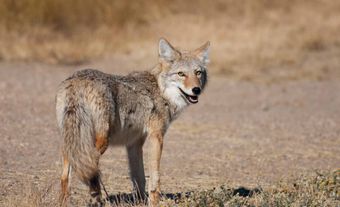Cougar, puma or mountain lion (Felis concolor, family Felidae), is the most gracile of the New World wild cats. It has long legs and tail, and a small head (similar to the African cheetah, thus has also been called the American cheetah). Colour varies from tawny to cinnamon or reddish brown; underparts are dull white. The backs of the ears, markings on the face and the last 5-8 cm of the tail are black.
Diet
Cougars are swift, skilful, solitary hunters who usually ambush their prey. They hunt wapiti, deer, hares and other small game. They also take agricultural animals and will stalk humans. They cache uneaten prey.
Reproduction and Development
Females breed at 2-3 years and at any time of the year, although 1-6 (usually 2 or 3) kittens are commonly born in the spring and summer after 3 months gestation. Newborn kittens are spotted and weigh 250-500 g. At 3 months, after weaning, the mother teaches her young to climb trees and hunt. Cougars may purr, hiss, growl or scream.
Range
In Canada, the range of the cougar was over much of British Columbia, across southern Alberta, Saskatchewan, Manitoba, Ontario and Québec to New Brunswick and Nova Scotia. More common on the western side of North America than the eastern side, they range as far south as southern South America - in fact, wherever their chief prey, deer, is present. Because they were believed to take domestic stock, cougars have been greatly reduced in settled North America. Populations still survive in forested and mountainous regions of Alberta and British Columbia, and there have been sightings in most of their previous range.

 Share on Facebook
Share on Facebook Share on X
Share on X Share by Email
Share by Email Share on Google Classroom
Share on Google Classroom







